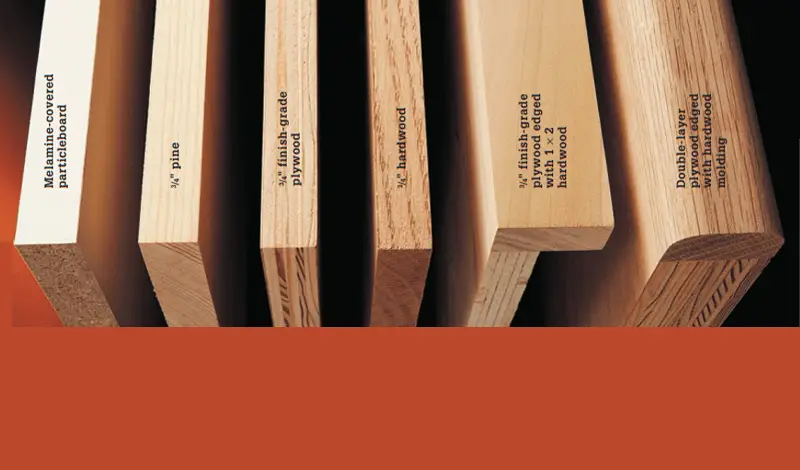When creating shelves, you want something sturdy enough to hold weight, adaptable to your space, and easy to work with. Plywood checks all these boxes, making it one of the most popular materials for shelving projects. Whether you’re designing floating shelves for your living room, heavy-duty storage for your garage, or something in between, plywood offers the perfect combination of strength, cost-effectiveness, and visual appeal.
In this guide, we’ll explore why plywood is ideal for shelves, the types and grades of plywood available, thickness recommendations, and how to make the most of this versatile material.
Why Choose Plywood for Shelves?
Plywood stands out for several reasons:
- Strength and Durability
- Plywood is made by layering thin sheets of wood veneer, with grains running perpendicular in each layer. This cross-grain construction provides exceptional strength compared to particle board or MDF, making plywood less prone to sagging under weight.
- Versatility
- Plywood comes in various grades and thicknesses, giving you the flexibility to choose the right type for different shelving needs—whether decorative, utility, or heavy-duty.
- Aesthetic Appeal
- With its natural wood grain, plywood offers a rustic charm when left unfinished or a modern look when painted or stained. It complements a variety of interior styles, from traditional to contemporary.
- Affordability
- Plywood is far less expensive than solid hardwood but offers comparable strength, making it an excellent budget-friendly option for shelves.
Types of Plywood for Shelves
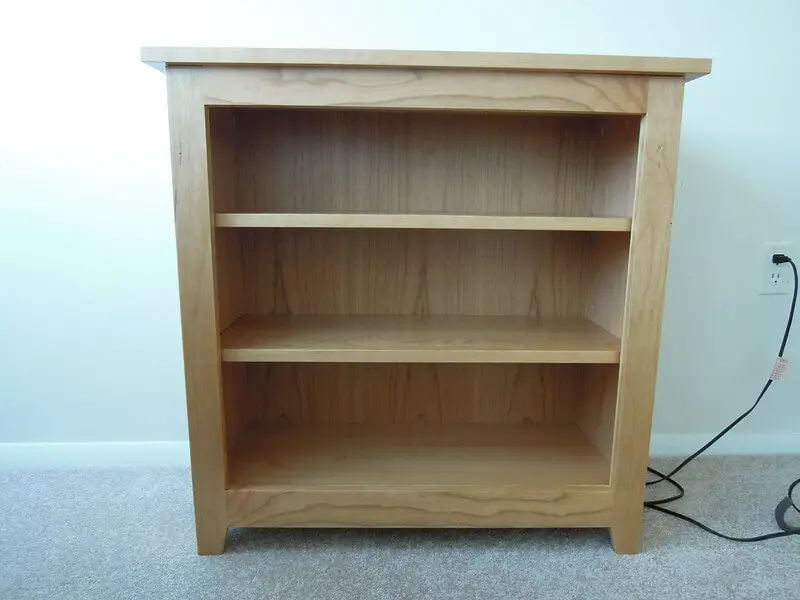
Understanding the types of plywood is essential for selecting the best material for your shelves.
ACX and BCX Plywood
- Best for: Utility and everyday shelves.
- Features: ACX plywood has an A-grade surface on one side (smooth, minimal defects) and a C-grade surface on the other. The “X” indicates exterior-grade glue, making it resistant to moisture.
- Why Choose It? ACX is perfect for areas like kitchens or bathrooms where moisture resistance is important. BCX is slightly lower in quality but still suitable for projects where finish isn’t critical.
Hardwood Plywood
- Best for: Decorative or furniture-grade shelves.
- Features: Made with hardwood veneers like oak, birch, or maple, this plywood mimics the look of solid hardwood at a fraction of the cost.
- Why Choose It? Ideal for creating elegant shelves that complement high-end decor.
Marine-Grade Plywood
- Best for: Outdoor or high-humidity areas.
- Features: Designed with waterproof glue, marine-grade plywood resists warping and delaminating even in wet environments.
- Why Choose It? Perfect for outdoor shelving or bathroom use where durability against moisture is critical.
Thickness Recommendations
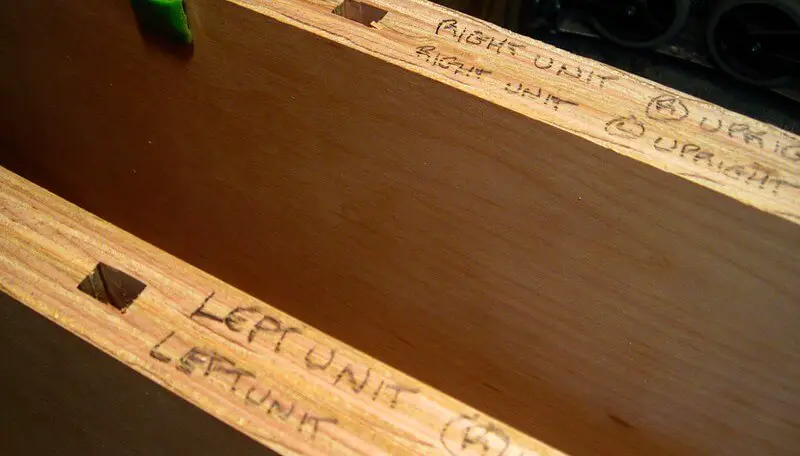
The thickness of your plywood shelves determines their strength and ability to support weight without sagging. Here’s a quick guide:
- 1/2-inch Plywood:
- Best for: Decorative shelves holding lightweight items like plants or small knick-knacks.
- Span Limit: Keep spans under 24 inches to prevent sagging.
- 3/4-inch Plywood:
- Best for: Most shelving projects, including bookshelves and kitchen storage.
- Span Limit: Supports spans up to 36 inches for moderate loads.
- 1-inch Plywood:
- Best for: Heavy-duty shelving for tools, garage equipment, or heavy books.
- Span Limit: Offers excellent support for spans up to 48 inches, but additional reinforcements may still be required.
Read Next
• Best Wood for Floating Shelves
• What Are the Best Types of Wood for Boat Building
• How to Select and Store Lumber
• Woodworking Measuring Tools
• Best Shelf Wood Options for Storage and Furniture
5 Best Types of Plywood for Shelves
1. Birch Plywood
- Why Choose It? Birch plywood is celebrated for its strength and smooth finish. Its light color and uniform grain make it versatile for painting, staining, or leaving natural. Commonly available in B/BB grades, it’s a go-to choice for furniture and shelving.
- Best Use: Living rooms, offices, or anywhere aesthetics are important.
- Pros:
- Strong and durable.
- Smooth finish, easy to work with.
- Excellent for staining or painting.
- Cons:
- More expensive than other options.
2. Oak Plywood
- Why Choose It? Known for its durability and beautiful grain, oak plywood is ideal for heavy-duty shelves or those requiring a timeless look. It can be stained to highlight its natural beauty.
- Best Use: Bookshelves, kitchen shelves, or anywhere heavy loads are expected.
- Pros:
- Highly durable and strong.
- Attractive grain pattern.
- Cons:
- Heavier than most other plywood.
- Relatively expensive.

3. Pine Plywood
- Why Choose It? A budget-friendly option, pine plywood offers good strength and workability. Its lighter color and rustic appearance make it perfect for casual interiors.
- Best Use: Utility shelves, country-style or rustic-themed spaces.
- Pros:
- Affordable and widely available.
- Easy to cut and shape.
- Cons:
- Softer, prone to dents and scratches.

4. Maple Plywood
- Why Choose It? Maple plywood is prized for its hardness, stability, and smooth surface, making it an excellent choice for modern or high-end shelves. It resists warping and provides a clean aesthetic.
- Best Use: Contemporary living spaces or high-traffic areas.
- Pros:
- Very hard and stable.
- Smooth surface for painting or staining.
- Cons:
- Can be more expensive.
- Staining can be challenging without a primer.
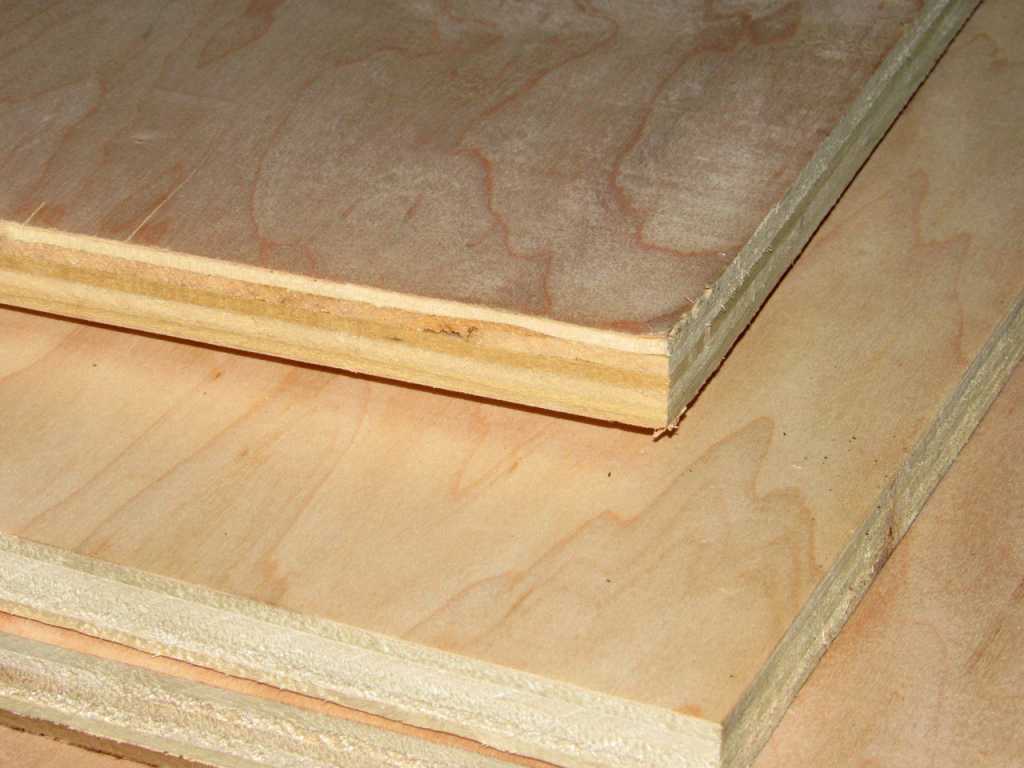
5. Eucalyptus Plywood
- Why Choose It? A sustainable and cost-effective option, eucalyptus plywood is dense, durable, and resistant to moisture and pests. Its longevity makes it ideal for heavy-duty use.
- Best Use: Bathrooms, kitchens, or outdoor shelving.
- Pros:
- Strong and affordable.
- Moisture and pest-resistant.
- Cons:
- Surface may not be as smooth as premium options like birch or maple.
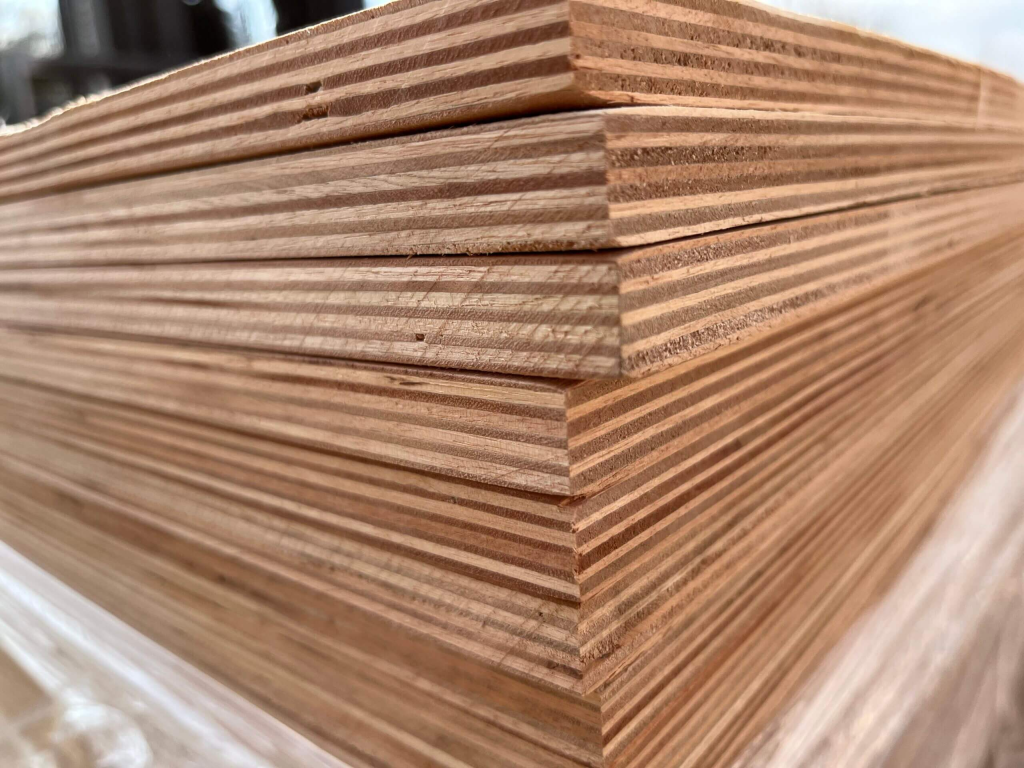
Plywood for Different Types of Shelves
1. Decorative Shelves
- Purpose: For displaying light items like photos, small plants, or decorative pieces.
- Best Plywood: Birch or maple plywood with a smooth, finish-grade surface.
- Thickness: 1/2-inch or 3/4-inch plywood works well for these shelves, as they typically don’t bear heavy loads.
- Tips: Use edge banding or hardwood strips for a polished look. Paint or stain the plywood to match your room’s aesthetic.
2. Utility Shelves
- Purpose: For storing household items in kitchens, closets, or pantries.
- Best Plywood: ACX or BCX plywood for its balance of strength and moisture resistance.
- Thickness: 3/4-inch plywood is recommended to support moderate loads without sagging.
- Tips: Seal the plywood with a clear finish to protect against spills or humidity.
3. Heavy-Duty Shelves (Garage or Basement Storage)
- Purpose: For holding heavy tools, equipment, or storage bins.
- Best Plywood: 1-inch-thick hardwood or marine-grade plywood.
- Thickness: A minimum of 3/4-inch, but 1-inch is better for heavy loads.
- Tips: Reinforce spans longer than 36 inches with metal brackets or cleats to prevent sagging.
4. Floating Shelves
- Purpose: Sleek, minimalist shelves that appear to “float” on the wall.
- Best Plywood: Birch or maple for its attractive grain and finish.
- Thickness: 3/4-inch plywood, as thinner materials may not provide enough strength for a seamless look.
- Tips: Pair with strong, concealed mounting brackets for stability.
5. Bathroom Shelves
- Purpose: For storing towels, toiletries, or décor in humid conditions.
- Best Plywood: Marine-grade plywood, as it resists moisture and warping.
- Thickness: 3/4-inch plywood is sufficient for most bathroom shelves.
- Tips: Apply a waterproof sealant to enhance durability.
Key Considerations Based on Shelf Type
- Load Requirements:
- Light loads can use thinner plywood, while heavy-duty storage needs thicker, stronger material.
- Environment:
- For humid or damp areas like bathrooms or basements, marine-grade plywood is ideal.
- Aesthetics:
- Decorative shelves benefit from high-grade plywood with attractive wood grains that can be stained or painted.
- Budget:
- Choose pine or eucalyptus plywood for cost-effective utility shelves, and opt for birch or oak for premium decorative shelves.
Factors to Consider When Choosing Plywood for Shelves
1. Load-Bearing Capacity
- The thickness and type of plywood determine its ability to handle weight. For heavy-duty shelves, opt for at least 3/4-inch thick plywood, while lighter-duty shelves can use thinner sheets.
2. Finish and Appearance
- If aesthetics are a priority, choose high-grade plywood like birch or oak. For utility spaces where looks are less important, pine or eucalyptus plywood offers a cost-effective alternative.
3. Plywood Grade
- Grades range from A (minimal imperfections) to D (knots and defects). Choose A or B grades for visible shelves, and lower grades for hidden utility shelves.
4. Budget
- Higher-grade plywood like birch and maple costs more but delivers superior aesthetics and durability. Balance quality and cost based on your project’s needs
People Also Ask
1. What kind of plywood should I use for a shelf?
The best plywood for shelves depends on the application. Finish-grade plywood like birch or oak is ideal for decorative shelves, while ACX or BCX plywood works well for utility shelving.
2. What thickness of plywood is recommended for shelving?
For most shelving projects, 3/4-inch plywood is the standard. It provides the strength needed for medium to heavy loads. For lighter shelves, 1/2-inch plywood may suffice, while 1-inch plywood is best for heavy-duty shelves.
3. Is MDF or plywood better for shelves?
Plywood is generally better for shelves because it is more durable and resistant to sagging under heavy loads. MDF is smoother and great for painting but is not as strong or moisture-resistant as plywood.
4. What type of wood is best for shelves?
Hardwood plywood, such as birch, oak, or maple, is often the best choice for shelves. It combines strength, durability, and a visually appealing grain pattern.
6. Is 12mm plywood okay for shelves?
12mm (approximately 1/2 inch) plywood can be used for lightweight shelves with shorter spans (under 24 inches). For heavier loads or longer spans, thicker plywood is recommended.
7. Can you paint plywood?
Yes, plywood can be painted to match your decor. Use a primer before applying paint to create a smooth, long-lasting finish.
8. What is the strongest plywood?
Marine-grade plywood is considered the strongest due to its water-resistant glue and high-quality layers. It’s ideal for humid environments or heavy-duty applications.
